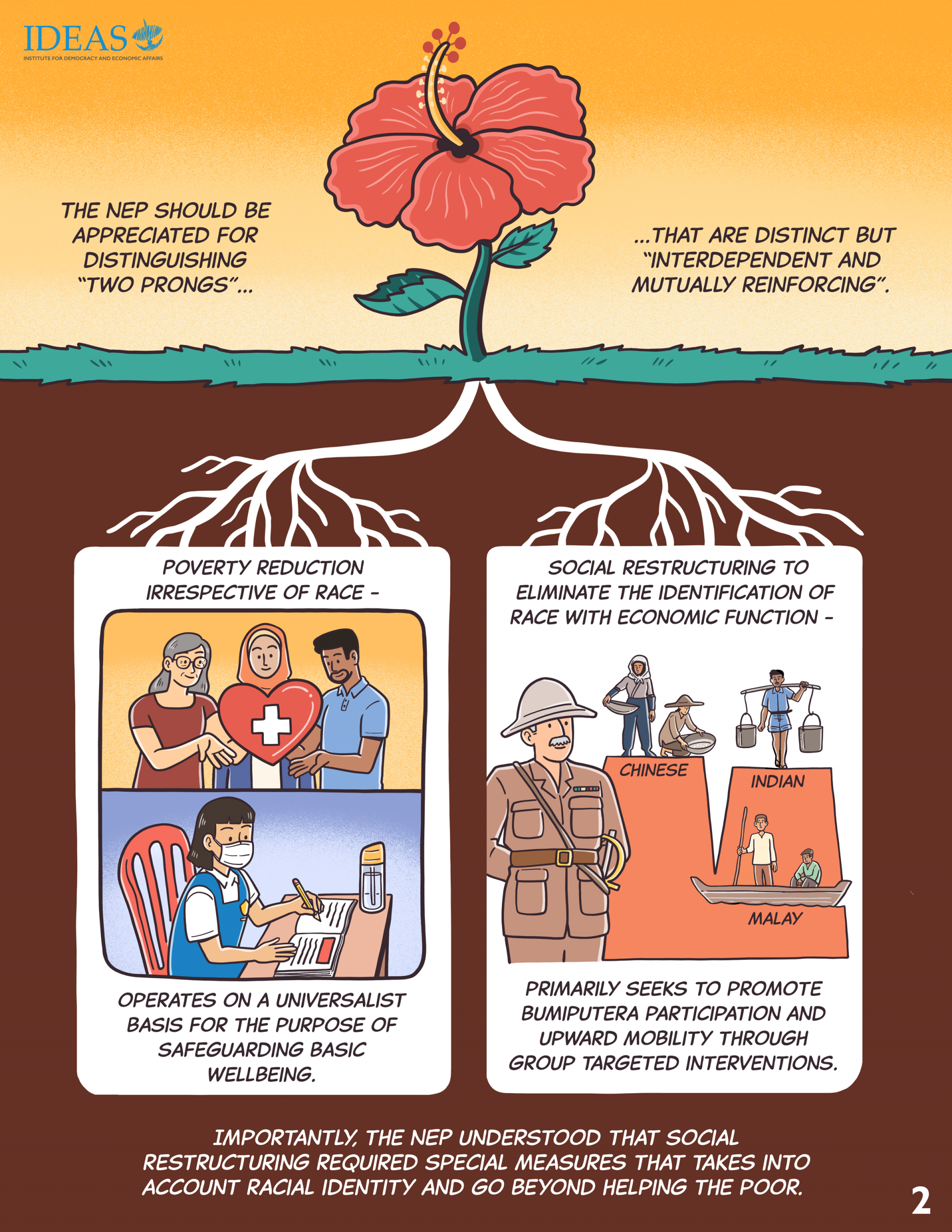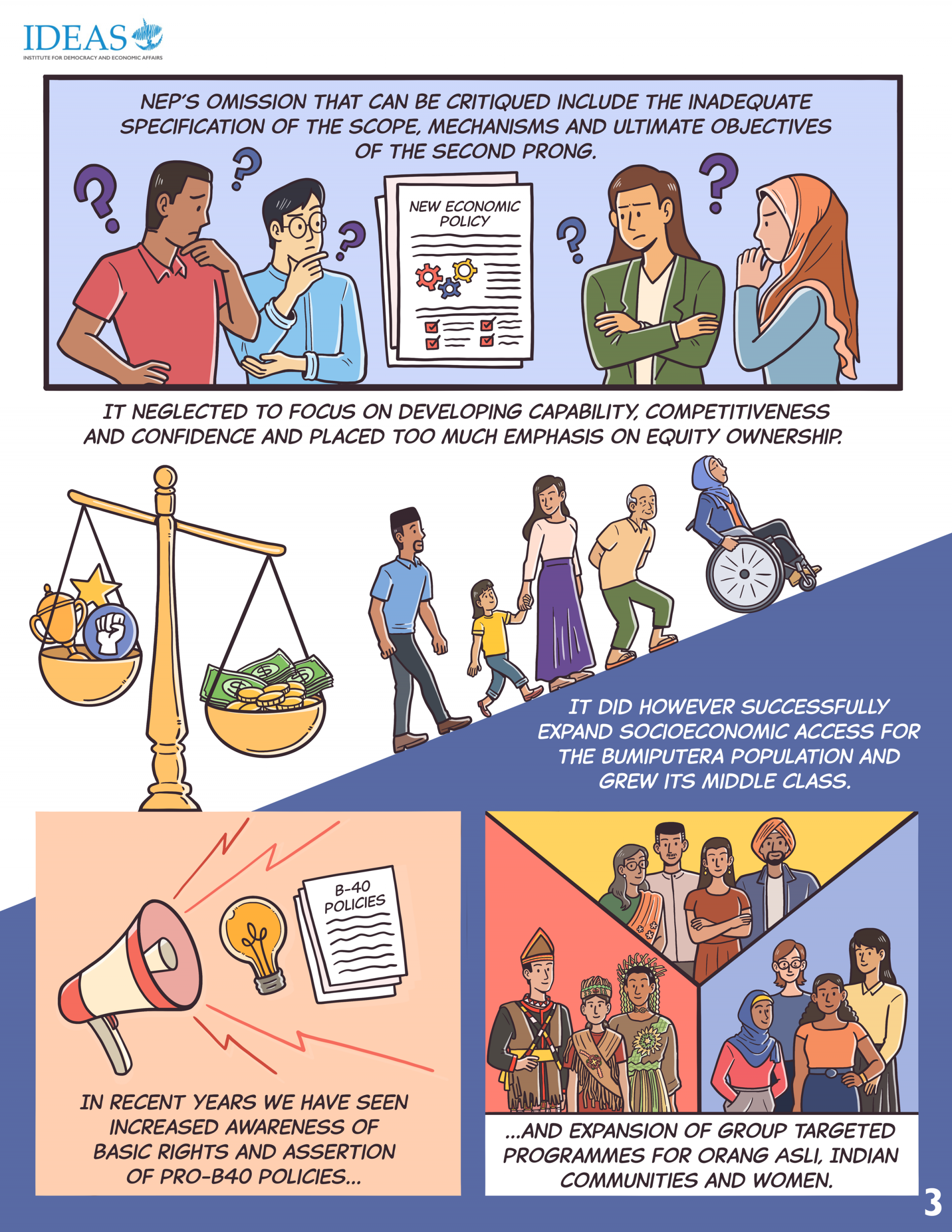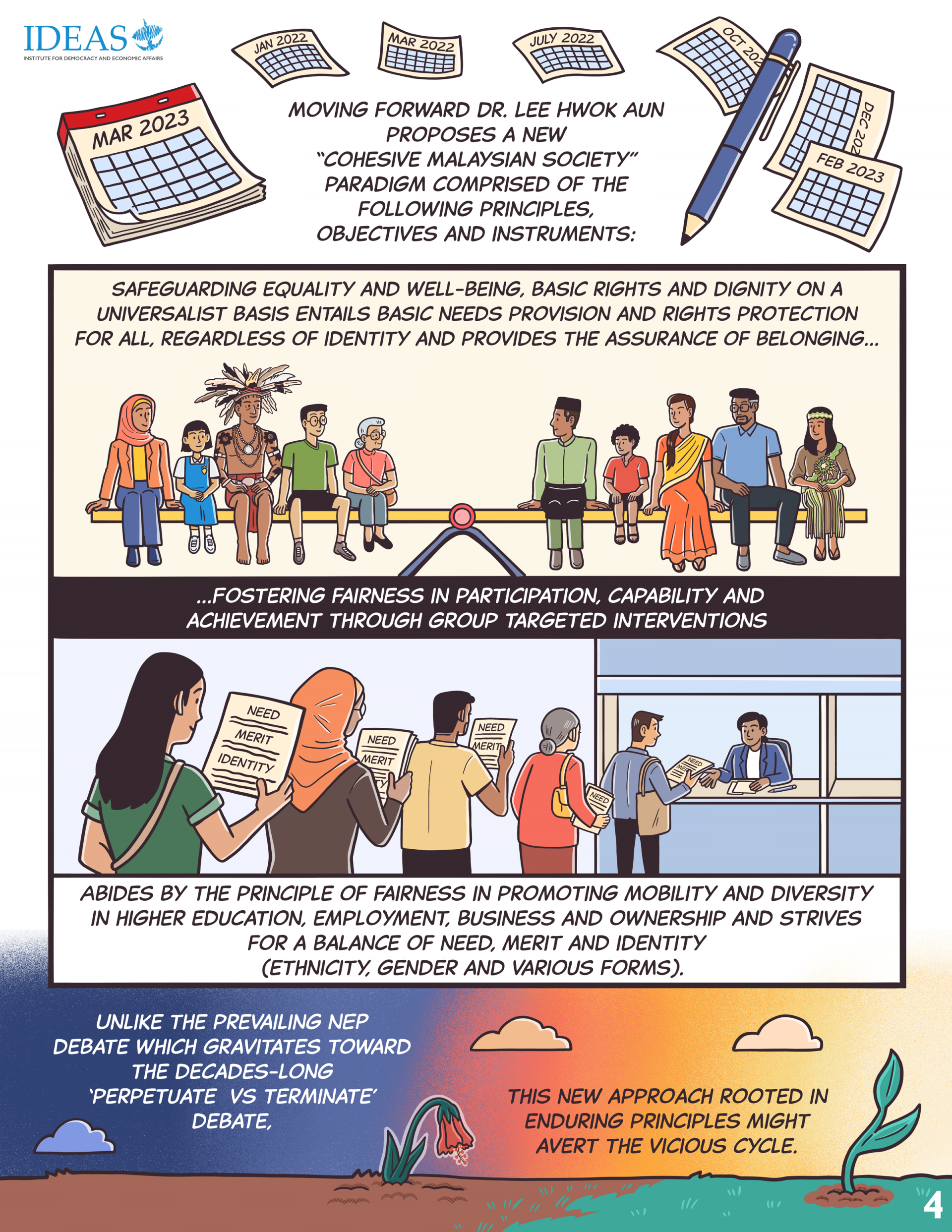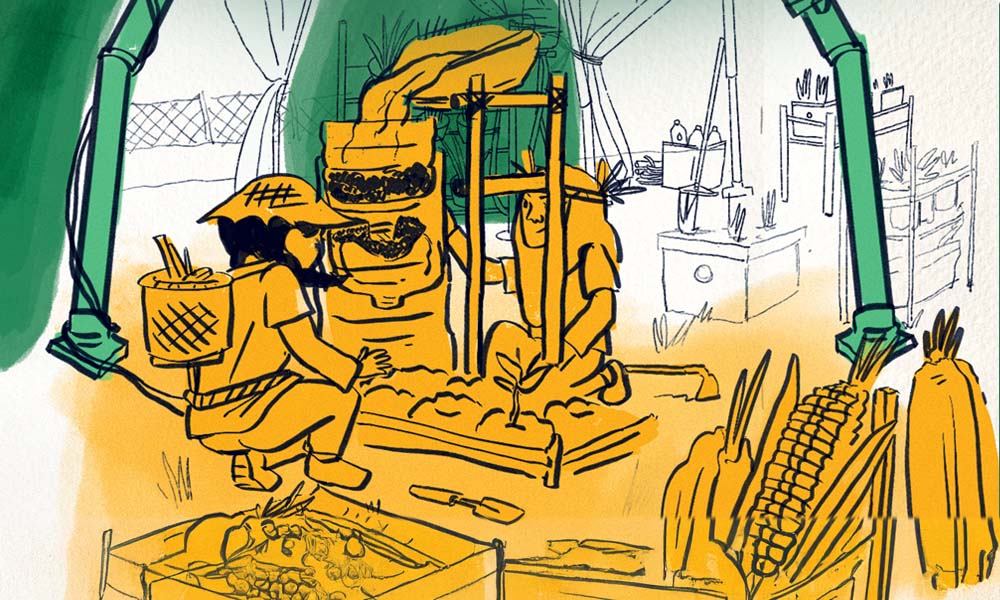
Policy Ideas No. 83 –
Lessons from the Ground: Orang Asli Education Programme Implementation Insights
Authors: Suria Selasih Angit and Durrah Sharifah Ahmad Azlan
The working paper explores the challenges, successes, and key takeaways from implementing educational programmes tailored for the Orang Asli community in Malaysia. It provides actionable insights to bridge this divide by enhancing collaboration among stakeholders, centering Orang Asli voices, and integrating culturally responsive approaches to improve educational outcomes for Orang Asli students. The following are findings from each phase of the implementation:
- Pre-implementation phase: Engaged Orang Asli communities through co-creation and consultations, aligned with public sector stakeholders for contextual relevance, and built implementer capacity through workshops on Indigenous pedagogies and impact-driven frameworks. A key lesson is that meaningful and continuous engagement of Orang Asli community members not only inculcates a sense of ownership and trust, but also strengthens school-community relationships and enhances parental motivation to support their children's education, despite existing logistical and socioeconomic challenges. Additionally, equipping implementers with tools and knowledge to ensure that interventions are contextually relevant, impact-driven, and rooted in Indigenous perspectives is important.
- Implementation phase: Implemented two tailored programmes in two Orang Asli schools in Gua Musang, Kelantan. They are a STEM-focused Robotics programme and an entrepreneurship-driven I-Skilled Competency Programme, both promoting practical skills, student leadership, and culturally responsive learning with strong community involvement.
- Post-implementation phase: Post-implementation reflections highlighted stronger school-community relationships, increased parental involvement, and noticeable student growth in confidence, technical skills, and interest in STEM and entrepreneurship. While community collaboration and culturally responsive practices were praised, challenges such as logistical barriers, limited parent participation, and the need for more diverse programming underscored the importance of sustainability and deeper coordination with education authorities.
The lessons from this initiative highlight the transformative impact of community-led, culturally responsive education tailored to Orang Asli contexts. Moving forward, sustained collaboration and participatory approaches will be crucial in building an inclusive education ecosystem that truly empowers Orang Asli children.
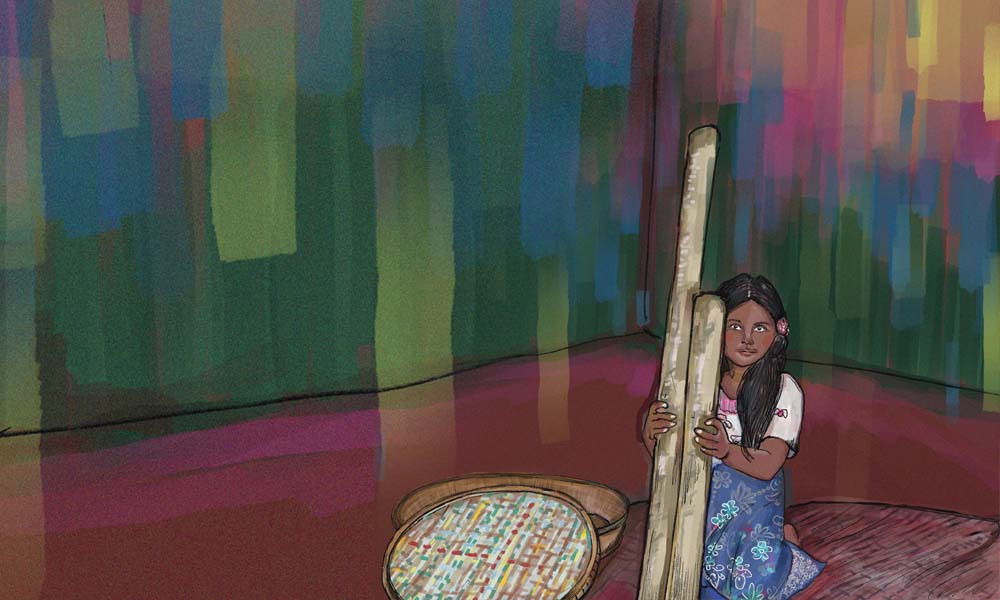
Policy Ideas No. 82 –
Voices from the Ground: Towards Strength-Based and Culturally Responsive Education for Orang Asli Children
Authors: Suria Selasih Angit, Durrah Sharifah Ahmad Azlan, Yvonne Tan and Melanie Chan
Voices from the Ground: Towards Strength-Based and Culturally Responsive Education for Orang Asli Children A participatory research initiative aimed at guiding interventions to address the educational challenges faced by the Orang Asli, the Indigenous communities of Peninsular Malaysia. This project seeks to amplify the voices of Orang Asli communities, teachers, and civil society organizations (CSOs) to inform more inclusive and effective educational policies and practices. Findings:
- There is a strong need for building trust between Orang Asli parents, schools, and JAKOA. Parents expressed a desire for deeper engagement with teachers, while teachers highlighted the challenges of communicating with parents due to geographical and cultural barriers. Both groups emphasized the importance of JAKOA playing a more active role in bridging these gaps.
- The research also emphasized the value of celebrating strengths of Orang Asli students, showcasing their talents and aspirations particularly in areas like carpentry, agriculture, and the arts. Teachers and parents advocated for a more skill-based, experiential learning approach that integrates Orang Asli culture and knowledge into the curriculum.
- Underlying challenges significantly impact Orang Asli students’ educational outcomes. These include poverty, lack of access to clean water, and social exclusion. Teachers noted the need for greater cultural understanding and sensitivity, while parents highlighted the economic pressures that force children to leave school early.
Together, these insights offer a powerful call to action for a more inclusive, culturally grounded, and community-led approach to Orang Asli education. By centering Orang Asli voices and advocating for meaningful collaboration, the path toward equitable and sustainable educational outcomes becomes clearer.
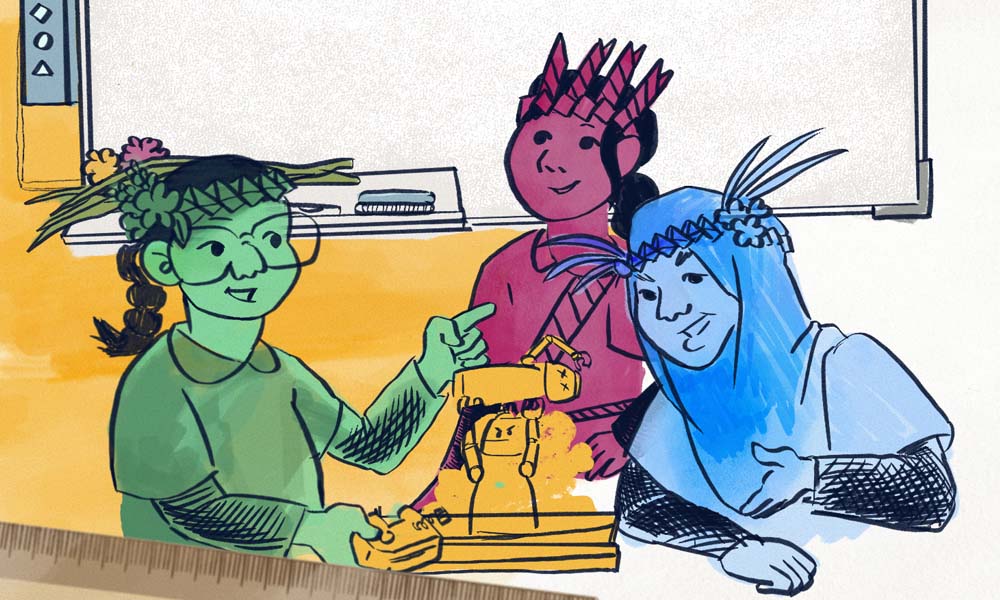
Brief IDEAS No. 43 –
Actors on the Ground: Mapping Orang Asli Education Stakeholders
Authors: Durrah Sharifah Ahmad Azlan, Sabrina Firdaus Aloysius, and Suria Selasih Angit
This policy brief offers a comprehensive analysis of the stakeholders involved in Orang Asli education, mapping their roles, initiatives, and the challenges they face. The following are key findings from the paper derived from 70 stakeholders and 110 programmes identified:
- Government Efforts: The Ministry of Education (MOE) leads Orang Asli education through infrastructure, adaptive curricula, and support programs. JAKOA provides financial aid and motivational initiatives. Member of Parliament (MP) engagement is uneven.
- Non-State Actors: NGOs are major implementers (69.5%), but funding is a key gap, making up just 15.7% of overall stakeholders. Few funders focus solely on Orang Asli communities. Most initiatives are in Pahang, Perak, and Selangor, while states such as Kelantan are underserved. Most initiatives are long-term or continuous, calling for sustained funding and M&E processes. Most educational programs target Orang Asli students, but some are broader in scope.
- Community Insights: Culturally relevant, community-driven approaches are essential. Successful programs involve trust-building, sustained relationships, and mother-tongue education. Implementation challenges include bureaucracy, limited political support, unclear legal frameworks, misalignment with funder expectations, and lack of reliable data.
Achieving equitable education for Orang Asli children demands sustained collaboration, culturally grounded approaches, and targeted support in underserved regions. By aligning government, civil society, and private sector efforts, stakeholders can create inclusive, long-term solutions that empower Orang Asli communities and uphold their right to quality education.

Policy Paper No 76 -
Breast Cancer Care in Malaysia: Access to Early Detection, Diagnosis and Optimal Treatment
Authors: Fatiha Hana Shabaruddin and Kirjane Ngu
“Breast Cancer Care in Malaysia: Access to Early Detection, Diagnosis and Optimal Treatment” is a report that evaluates the gaps in breast cancer care throughout the patient pathway, from access to early detection, timely diagnosis and optimal treatment.
Breast cancer is one of the most prevalent cancers in the world and in Malaysia. Public health efforts toward reducing the burden of breast cancer in Malaysia have been largely focused on promoting early detection through opportunistic mammography screening and clinical breast examination. Despite such efforts, Malaysia still lags behind most developed nations in terms of survival outcomes for breast cancer as issues of delayed diagnosis and treatment still remain.
Drawing from patients and survivors of breast cancer, relevant stakeholders as well as existing literature, this report calls for priority to be given to improving survival outcomes for breast cancer through a holistic and collaborative approach.
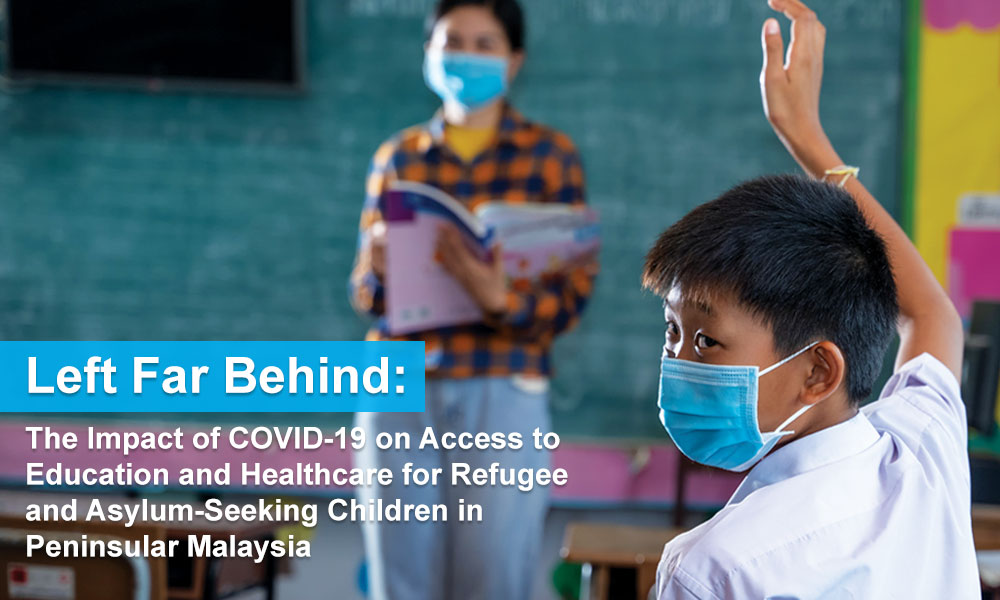
Left Far Behind:
The Impact of COVID-19 on Access to Education and Healthcare for Refugee and Asylum-Seeking Children in Peninsular Malaysia
Author: Diode Consultancy and Wan Ya Shin
“Left Far Behind: The Impact of COVID-19 on Access to Education and Healthcare for Refugee and Asylum-Seeking Children in Peninsular Malaysia” is a partnership project between UNICEF and IDEAS Malaysia to assess the impact of COVID-19 on refugee and asylum-seeking children’s access to education and healthcare in Malaysia and identify evidence-based solutions to address these impacts. This is a study conducted under Protecting children affected by migration in Southeast, South and Central Asia, a project implemented by UNICEF and IDEAS, and co-funded by the European Union and UNICEF.
More than 25% of the refugees and asylum-seekers registered with UNHCR in Malaysia are children below the age of 18. This means that some 47,200 children have limited or no access to education, healthcare and other essential services due to their lack of legal status (figures as of June 2022). The lack of a domestic legislative and administrative framework to protect refugees and asylum seekers in Malaysia puts these children amongst the most vulnerable groups in society to the impact of COVID-19.
As Malaysia charts its way out of the pandemic, the findings of this study have demonstrated the disproportionate impacts of the COVID-19 pandemic on the already precarious circumstances of these vulnerable children. These impacts, if not addressed urgently, are likely to continue bringing long-term harm to their lives. Drawn from refugees and asylum-seekers themselves, as well as the teachers and healthcare workers that support them, the recommendations in this study recognize the lessons learned during the pandemic to provide concrete suggestions to address the identified barriers and capitalise on new opportunities.
Download the report to find out more about the study.
Download the audiobook to listen to the summary of findings from the report in Rohingya language.

Contextualising education policy to empower Orang Asli children
Author:Wan Ya Shin and Rusaslina Idrus
The issue of education inequality confronted by Orang Asli children has been recognised by the Malaysian government, with various policies and programmes implemented to address the challenges. While progress has been made, this education gap still persists and has been thus far unresolved to any meaningful degree.
The report seeks to identify the underlying challenges that Orang Asli children face in obtaining an education and to understand the implementation and delivery of programmes and assistance provided by the government.
This study employs a qualitative methodology through the use of focus group discussions and semi-structured interviews. There are many evident challenges to Orang Asli education, whose implications are discussed in this report. The main issues raised by parents include poor accessibility to schools, racial discrimination, financial constraints, the absence of Orang Asli history and cultures in the school curriculum, and parental involvement. Alongside the perspectives of parents, the report also presents challenges related to education based on interviews conducted with school teachers teaching Orang Asli students.
The end goal is the creation of a community of Orang Asli learners who are empowered and have access to opportunities as any student in Malaysia should have. Education should not be a tool used to force Orang Asli to change and assimilate into mainstream society, but rather it has the potential to empower children and, by extension, the wider communities.
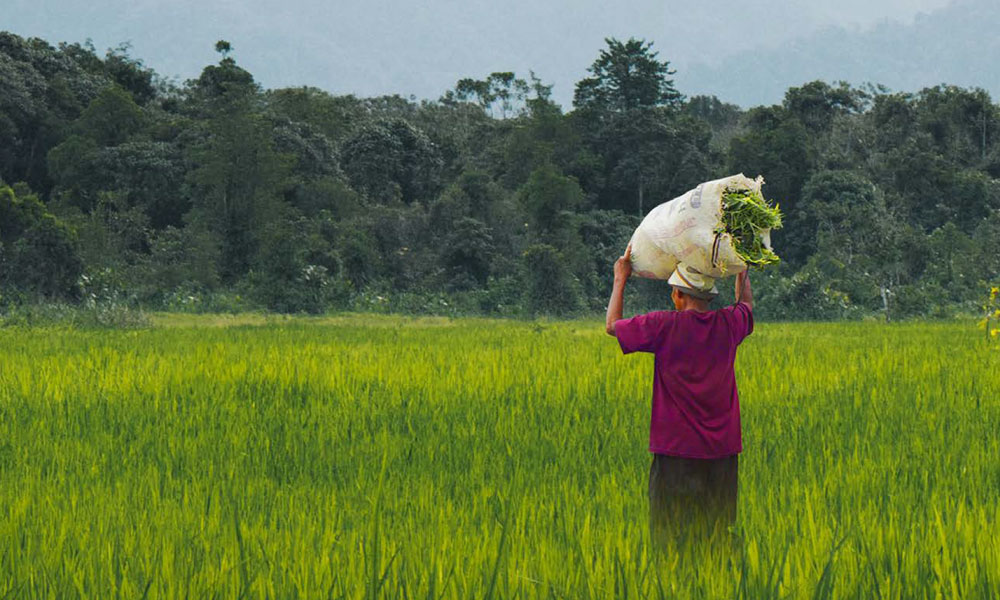
Policy Paper No 75 -
The New Economic Policy and Contesting Bumiputera Identity Among Orang Asli and the Indigenous Peoples of Sabah and Sarawak
Author: Wan Zawawi Ibrahim
The New Economic Policy (NEP) was Malaysia’s first state-driven transformation policy. At the core of the NEP project was the official institutionalisation of Bumiputeraism as an authority-defined identity central to the self-identification of the nation-state.
Contrary to the claim of the NEP in promoting national unity, the Bumiputera identity is one that is fraught with its own ambiguities and contradictions and has arguably contributed to greater social inequalities and underpinned the persistence of “race thinking” in Malaysian public discourse. With the benefit of hindsight, the NEP’s after-effects have been to institutionalise and embed a divisive social cleavage, as it proactively defined who to include and who to exclude within its terms of reference, and thus who to empower or marginalise. Its initial impact was to homogenise some sections of society, even to the point of creating a sense of egalitarianism among those deemed Bumiputeras (those considered “indigenous” or, literally, “sons of the soil”), propelled by its own developmental claims and legitimation processes, and with it rising expectations among those who felt that they were the identifiable beneficiaries. However, as the logic of Bumiputeraism played itself out, so too did the (intended and unintended) consequences of this state-driven identity begin to unfold.
The aim of this paper is to examine the trajectory of policymaking and identity-making in the context of the NEP and its aftermath. It specifically deals with how it has impacted on the identity of indigenous communities, with a focus on those Bumiputera communities, both Orang Asli of peninsular Malaysia and indigenous peoples of Sarawak and Sabah, who have palpably not benefited from the development policies implemented in its name.
This paper will first, examine the context in which the New Economic Policy (1971-1990) emerged and the ‘package’ that came together with it, and show that the NEP’s over- riding objective was very much linked to the national question, namely the building of a united and cohesive Bangsa Malaysia. The paper will also assess the NEP’s impact, and ‘measure’ the extent of social cohesion among various ethnic groups. This will be followed with an analysis of the challenges in building Bangsa Malaysia since the end of the 20th century and the first few decades of the 21st century, while the conclusion will present some ideas in moving forward.

Policy Paper No 74 -
Fifty Years of The New Economic Policy: Revisiting Its Impact on Social Cohesion, National Unity and Creation of Bangsa Malaysia
Author: Abdul Rahman Embong
In 2021, the New Economic Policy (NEP) commemorates its 50th birthday. This is an opportune moment to revisit the NEP, especially its philosophical underpinnings, its achievements, impact, challenges and unintended consequences, and the lessons that can be drawn for future development and nation building efforts. The NEP is a strategic plan for nation building with the overriding objective to achieve national unity. However, it is pertinent to note that even after 50 years of the NEP, a National Unity Plan had to be crafted and introduced in early 2021. This implies that issues of inter-ethnic/race relations, unity, social cohesion, national identity and nation building are still very much with us. These issues cannot be taken for granted, and must be addressed seriously in academic and policy discourses, and embedded in policy making and implemented.
This paper will first, examine the context in which the New Economic Policy (1971-1990) emerged and the ‘package’ that came together with it, and show that the NEP’s over- riding objective was very much linked to the national question, namely the building of a united and cohesive Bangsa Malaysia. The paper will also assess the NEP’s impact, and ‘measure’ the extent of social cohesion among various ethnic groups. This will be followed with an analysis of the challenges in building Bangsa Malaysia since the end of the 20th century and the first few decades of the 21st century, while the conclusion will present some ideas in moving forward.

Policy Paper No 73 -
The New Economic Policy Beyond Fifty: Assessing its Strengths and Weaknesses to Chart a Cohesive Malaysian Society
Author: Lee Hwok-Aun
The New Economic Policy’s 50th anniversary in 2021 provides an opportunity to reflect on its achievements and shortfalls, and imagine boldly into the future. Undoubtedly, Malaysia has been transformed by the NEP at all levels and aspects. The debates surrounding the NEP tend to be polarising and often reach a stalemate; however, a more constructive engagement is possible through re-appreciating the NEP’s strengths and examining its weaknesses/omissions, grappling with its policy discourses as well as with its popular but misguided perspectives. This paper suggests that by doing all these, we can ultimately recraft the NEP to forge a cohesive and inclusive Malaysian society.
Over the decades, the NEP immensely expanded socioeconomic access for the Bumiputeras and grew its middle classes – but decidedly fell short in the ultimate goal of cultivating Bumiputera capability and their confidence, especially in the higher education and enterprise development policy sectors. This paper proposes a new “cohesive Malaysian society” paradigm comprising the following principles, objectives and instruments:
- safeguarding equality of well-being, basic rights and dignity on a universalist basis;
- fostering fairness in participation, achievement and diversity through group-targeted interventions. The first entails providing basic needs and rights protection for all, regardless of one’s identity, and gives much deeper assurance of belonging and equality than the established slogan of ‘helping the poor irrespective of race’.











